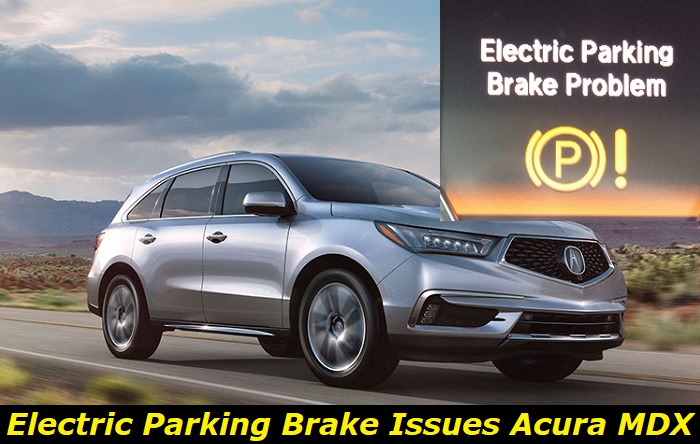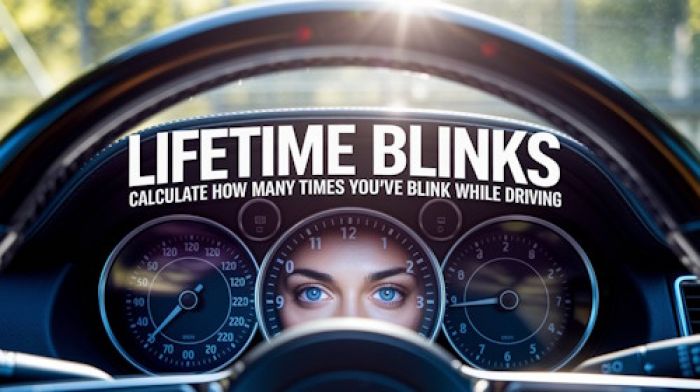The primary benefit of an electric parking brake (EPB) in the Acura MDX is the increased safety it offers. With an EPB, the risk of forgetting to engage the parking brake is eliminated, as the system automatically applies the brakes when the vehicle is turned off. Additionally, should you need to suddenly stop while driving, the EPB can be quickly engaged to help prevent an accident.
Electric parking brake problem message highlights
- Common reasons:parking brake motor, EPB control module issue, 12V battery weak
- How to fix:check the battery, read the codes, try disconnecting the battery for some time
- Possible consequences:parking brake may not be engaged
- Priority level:High
- Can you drive?Yes
- DIY repair:Possible but complicated
- Repair price range:$50-$500

Common Problems with the EPB of the Acura MDX
According to Acura MDX owners and technicians here are the most common causes of the EPB problems with the Acura MDX as well as their respective solutions:
1. Brake Pedal Switch Malfunction
The brake pedal switch is a vital component of the Electric Parking Brake (EPB) system in your Acura MDX. This switch tells the system when the brake pedal is depressed so that the EPB can engage and hold the vehicle in place. If the brake pedal switch is not working properly, it can cause the EPB to fail, which can be dangerous.
There are a few possible reasons why the brake pedal switch may not be working properly. One possibility is that there is a problem with the wiring harness. Another possibility is that the switch itself is defective.
You can easily determine if the wiring harness and the switch are still in good condition. If you see signs of breakage or burnt parts in the said components, that means they are already in need of a replacement. If they are only dirty, you can gently clean them using a soft piece of cloth to remove the contamination preventing the proper contact of their connectors.
You can also diagnose the issue using a multimeter. This is especially useful if there are no visible signs of wear or damage on the mentioned parts.
To start, make sure that the multimeter is set to the "ohms" setting. Then, connect the probes of the multimeter to the two terminals of the harness. Do the same for the switch.
If there is no continuity between the terminals, then the switch is bad and needs to be replaced. If there is continuity between the terminals, then the switch is good and doesn't need to be replaced.
If you suspect that either of these is the case, you should have the system checked by a qualified technician as soon as possible.
2. Bad Gear Stick Selector Switch
If you're having trouble with your gear shift selector switch in your Acura MDX's EPB, there are a few possible causes. First, make sure that the switch itself is not loose or damaged. Conduct visual inspection for breakage, but in the absence of obvious signs, you may use a multimeter for a more precise assessment. Simply apply the steps discussed in the previous item to proceed.
If it looks okay, then the problem may be with the electrical connection to the switch. Again, check the connectors for any loose or broken wires. Test the continuity of the current in the wires using your ever-reliable multimeter, too.
Whichever part is at fault here needs to be replaced right away.
3. Faulty Parking Brake Sensor
There are a few probable reasons that your EPB sensor may not be functioning properly. One possibility is that something is blocking the sensor, such as dirt or debris. Another is that the sensor itself is damaged or faulty.
If something is blocking the sensor, you can try cleaning it off with a soft cloth. If the sensor itself is damaged or faulty, you will need to replace it with a new one. You can confirm your suspicions through visual checks for damage or by utilizing a multimeter.
To test the EPB sensor using a multimeter, first, turn off the engine and disconnect the negative battery cable. Then remove the EPB sensor from the vehicle.
Once the sensor is removed, connect the black lead of the multimeter to the negative terminal of the sensor, and connect the red lead of the multimeter to the positive terminal of the sensor. Turn on the multimeter, and set it to read DC voltage.
With the meter still on, probe each of the connector terminals on the back of the sensor. You should get a reading of 0 volts if both terminals are good, or a different voltage if one or both terminals are bad. A damaged sensor has to be replaced without delay.
Once you have replaced the sensor, make sure to test it out before driving your vehicle. This will ensure that it is working properly and will help prevent any further issues with your electric parking brake.
4. Shorted Fuse
If your EPB fuse is shorted, it can cause the system to fail. This is because the fuse provides power to the system and if it is not working properly, the system will not have enough power to operate correctly.
If you notice any visual signs of a shorted fuse, such as melted plastic or charring on its metal part, you should replace it as soon as possible. Make sure that the replacement has the same amperage as the old one.
One more way to determine if the fuse is shorted, you can test it with a multimeter. If the fuse is bad, it will show a low resistance reading when tested.
Replacing a fuse is something you can do easily by yourself. However, we still recommend the help of an experienced technician on this matter because the wrong positioning or the wrong type of fuse can surely make your problems worse.
5. Actuator Problem
If the EPB actuator is not working properly, it can cause the system to fail. The actuator is responsible for engaging and disengaging the parking brake, so if it is not working correctly, the parking brake will not engage or disengage properly.
There are a few possible causes of an actuator problem. First is that the actuator itself may be damaged or faulty. The other is that the EPB system may not be getting enough power.
If you suspect that the actuator is damaged or faulty, you can try replacing it with a new one. If you think that the problem may be with the power supply, you can check the EPB fuse to see if it is shorted. If so, replace the fuse with a new one. You can also check the voltage at the actuator connector to make sure that it is getting enough power.
If you are still having problems after checking these things, you may need to have the system checked by a qualified technician.
6. Corroded Connections
If the EPB system is not working properly, it could be due to corroded connections. This is because the EPB system relies on electrical signals to operate correctly, and if the connections are corroded, the signals can be disrupted.
If you notice any signs of corrosion on the EPB system's connections, you should clean them off as soon as possible. You can use a wire brush or sandpaper to remove the corrosion.
Once the connections are restored, you should apply a thin layer of dielectric grease to help prevent future corrosion. Make sure that you do not apply too much grease, as this can cause the connections to become overloaded and fail.
If you are still having problems after cleaning and greasing the connections, you may need to have the system checked by a qualified technician. It's likely that the corrosion has already caused significant damage to the said parts, and in this case, they need to be replaced.
7. Software Issue
If the EPB system is not working properly, it could be due to a software issue. This is because the EPB system relies on software to operate correctly, and if the software is not working properly, the system will not function correctly.
If you think that there may be a software issue, you can try resetting the system. To do this, disconnect the battery for about 30 seconds and then reconnect it. This will reset the system and may fix the problem.
If you are still having problems after resetting the system, you may need to have it checked by a qualified technician.
Conclusion
In most instances, you can still run your engine and operate your vehicle even with a faulty electric parking brake. However, that does not necessarily mean that it is safe to drive.
The system acting up may not trigger the key function of the EPB when you need it, or worse, it could activate unexpectedly while you're driving on the road. Both of which can have serious repercussions in terms of safety. Therefore, we can't stress enough the need to address any problems related to it immediately to save yourself from all the trouble along the way.
About the authors
The CarAraC research team is composed of seasoned auto mechanics and automotive industry professionals, including individuals with advanced degrees and certifications in their field. Our team members boast prestigious credentials, reflecting their extensive knowledge and skills. These qualifications include: IMI: Institute of the Motor Industry, ASE-Certified Master Automobile Technicians; Coventry University, Graduate of MA in Automotive Journalism; Politecnico di Torino, Italy, MS Automotive Engineering; Ss. Cyril and Methodius University in Skopje, Mechanical University in Skopje; TOC Automotive College; DHA Suffa University, Department of Mechanical Engineering






Add comment